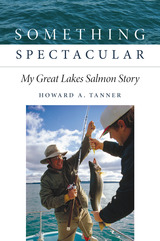21 start with A start with A
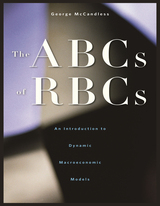
The ABCs of RBCs is the first book to provide a basic introduction to Real Business Cycle (RBC) and New-Keynesian models. These models argue that random shocks—new inventions, droughts, and wars, in the case of pure RBC models, and monetary and fiscal policy and international investor risk aversion, in more open interpretations—can trigger booms and recessions and can account for much of observed output volatility.
George McCandless works through a sequence of these Real Business Cycle and New-Keynesian dynamic stochastic general equilibrium models in fine detail, showing how to solve them, and how to add important extensions to the basic model, such as money, price and wage rigidities, financial markets, and an open economy. The impulse response functions of each new model show how the added feature changes the dynamics.
The ABCs of RBCs is designed to teach the economic practitioner or student how to build simple RBC models. Matlab code for solving many of the models is provided, and careful readers should be able to construct, solve, and use their own models.
In the tradition of the “freshwater” economic schools of Chicago and Minnesota, McCandless enhances the methods and sophistication of current macroeconomic modeling.
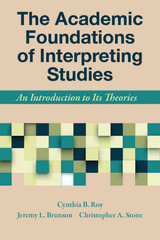
As sign language interpreting has emerged and evolved in the last 20 years as an academic field of study, the scope of learning has broadened to include fields beyond the language and culture of deaf people. This text surveys six disciplines that have informed the study of sign language interpreting: history, translation, linguistics, sociology, social psychology, and cognitive psychology, along with their major ideas, principal scholars, and ways of viewing human interaction. Each chapter includes clear learning goals, definitions, discussion questions, and images to aid understanding. The Academic Foundations of Interpreting Studies is required reading for upper-level undergraduate or first-year graduate students in interpreting, Deaf studies, and sign language programs.
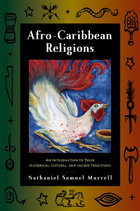
This accessibly written introduction to Afro-Caribbean religions examines the cultural traditions and transformations of all of the African-derived religions of the Caribbean along with their cosmology, beliefs, cultic structures, and ritual practices. Ideal for classroom use, Afro-Caribbean Religions also includes a glossary defining unfamiliar terms and identifying key figures.

The best-selling Alif Baa is the first volume of the Al-Kitaab Arabic language program third edition is now available as a multimedia textbook with added functionality and ease of use for students and teachers. In this edition of the introduction to Arabic letters and sounds, English-speaking students will find an innovative integration of colloquial and formal (spoken and written) Arabic. Together, the book and new companion website provide learners with all the material necessary to learn the sounds of Arabic, write its letters, and begin speaking Arabic, including interactive, self-correcting exercises to enhance learning. The companion website also gives instructors additional online grading options.
This multimedia textbook includes Alif Baa, Third Edition and a Companion Website Access Key for Alif Baa, Third Edition.
FEATURES• Four-color design throughout the book features over 100 illustrations and photographs
• Gives learners and instructors color-coded options for the variety of language they wish to learn in speaking: Egyptian, Levantine, or formal Arabic (MSA)
• Introduces over 200 basic vocabulary words in all three forms of spoken and written Arabic side by side, including expressions for polite social interaction, and activates them in interactive homework exercises and classroom groupwork
• Includes video dialogues in Egyptian and Levantine, filmed in Cairo and Damascus
• Includes video footage of an Arabic calligrapher, capsules on Arabic culture, and images of street signs from Morocco, Egypt, and Lebanon
• Includes new English-Arabic and Arabic-English glossaries, searchable in the companion website
• Companion website features a fully integrated set of interactive exercises with all the video and audio materials and additional online course management and grading options for teachers
Alif Baa provides the essential first 20-25 contact (classroom) hours of the Al-Kitaab program, accompanied by 40-50 homework hours. Students who complete Alif Baa should reach a novice-intermediate to novice-high level of proficiency.
Companion Website Minimum System Requirements:WindowsOS: Microsoft Windows 98, NT, 2000, ME, XP, Vista, 7CPU: 233MHz Pentium BasedRAM: 128MBDISPLAY:1024x768, color displayBROWSER: Microsoft Internet Explorer 7.0 or higher, or Firefox version 3.0 or higherCONNECTION SPEED: A high-speed connection with throughput of 256 Kbps or more is recommended to use audio and video components.EQUIPMENT: You will need speakers or a headset to listen to audio and video components.PLUG-INS: You must have the latest version of Adobe Flash Player.
MacintoshOS: Mac OSXCPU: 233MHz Power MacintoshRAM: 128MBDISPLAY:1024x768, color displayBROWSER: Firefox version 3.0 or higher, or Sarari 3.0 or higherCONNECTION SPEED: A high-speed connection with throughput of 256 Kbps or more is recommended to use audio and video components. EQUIPMENT: You will need speakers or a headset to listen to audio and video components.PLUG-INS: You must have the latest version of Adobe Flash Player.
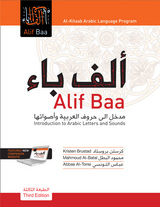
E-Textbooks are now available to purchase or rent through VitalSource.com! Please visit VitalSource for more information on pricing and availability.
As of January 1, 2021, Smart Sparrow Companion Websites are no longer available for any of our textbook programs.
New companion websites are coming soon, and will be hosted by Lingco. Instructors may sample the new companion websites now by visiting GUPTextbooks.com/companionwebsites.The full websites will be available for fall 2021 course adoption. Homework exercises are included in the textbook. Print answer keys are available for purchase through GUP. Ebook answer keys are available on the GUP website and VitalSource.com.
Alif Baa is the first volume of the best-selling Al-Kitaab Arabic Language Program, now in its third edition. In this edition of Alif Baa: Introduction to Arabic Letters and Sounds, English-speaking students will use the integrated method of learning colloquial and formal (spoken and written) Arabic together. Alif Baa provides learners with all the material necessary to learn the sounds of Arabic, write its letters, and begin speaking Arabic.
NEW: Audio and video content needed to complete the homework exercises is available to stream online for free on AlKitaabTextbook.com. (Note: DVDs that once featured the audio and video are now obsolete and no longer included in the books.)
FEATURES
• Four-color design throughout the book features over 100 illustrations and photographs• Gives learners and instructors color-coded options for the variety of language they wish to learn in speaking: Egyptian, Levantine, or formal Arabic (MSA)• Introduces over 200 basic vocabulary words in all three forms of spoken and written Arabic side by side, including expressions for polite social interaction, and activates them in interactive homework exercises and classroom groupwork• Includes video dialogues in Egyptian and Levantine, filmed in Cairo and Damascus, streaming on AlKitaabTextbook.com• Includes video footage of an Arabic calligrapher, capsules on Arabic culture, and images of street signs from Morocco, Egypt, and Lebanon, streaming on AlKitaabTextbook.com• Includes English-Arabic and Arabic-English glossaries
Alif Baa provides the essential first 20-25 contact (classroom) hours of the Al-Kitaab Arabic Language Program, accompanied by 40-50 homework hours. Students who complete Alif Baa should reach a novice-intermediate to novice-high level of proficiency.
Instructors may request complimentary print or digital Teacher’s Edition exam or desk copies, which include the answer key. To request access to any of the Teacher’s Edition Vital Source eTextbooks, instructors may visit VitalSource.com and select “Faculty Sampling” in the upper right corner. Please note: While answer keys are sold separately from the Student’s Edition, the corresponding answer key is included in the Teacher’s Edition.
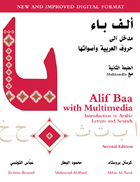
NEW AND IMPROVED DIGITAL FORMAT!
Since the release of the second edition of Alif Baa with DVDs in the fall of 2004, thousands of Arabic language learners have benefited from the integrated textbook and DVDs. This new version—Alif Baa with Multimedia—functions even better and features a new and improved digital format.
The content of Alif Baa with Multimedia, Second Edition, including the text and all of the audio and video on the disk, is exactly the same as that of Alif Baa with DVDs, Second Edition. Only the format of the disk has changed so that all files will be easy to play using the free Adobe Flash Player. All units are now included on only one disk. Teachers and students may use both versions of the textbook side-by-side in the classroom and notice no difference in content or appearance. It should not affect the learning experience or require teachers to do any additional preparation.
FEATURES• Introduces about 150 basic vocabulary words, including conventional forms of politeness and social greetings• Introduces a range of Arabic from colloquial to standard in authentic contexts• Includes video footage of an Arabic calligrapher, capsules on Arabic culture, and images of street signs from Morocco, Egypt, and Lebanon• Provides the essential first 20-25 contact hours of the Al-Kitaab program
The DVD that accompanies Alif Baa with Multimedia plays in any computer’s DVD drive. In order to view the files, you will need to download and install the free Flash Player from Adobe’s website.
System Requirements:
Windows• 450 MHz Intel Pentium II (or compatible) processor• MS Windows 2000, Windows XP, or Windows Vista• 128MB of RAM and 128MB of VRAM• Computer with DVD drive• Headphones or speakers• Flash Player (free download from http://www.adobe.com/products/flashplayer/)
Mac• 500 MHz PowerPC G3 or 1.33 GHz Intel Core Duo processor• Mac OS X v10.4 or 10.5• 128MB of RAM and 128MB of VRAM• Computer with DVD drive• Headphones or speakers• Flash Player (free download from http://www.adobe.com/products/flashplayer/)
Georgetown University Press is not able to provide technical support for the CDs and DVDs that accompany the Al-Kitaab series.

Alif Baa is the first volume of the best-selling Al-Kitaab Arabic Language Program, now in its third edition. In this edition of Alif Baa: Introduction to Arabic Letters and Sounds with Website, English-speaking students will use the integrated method of learning colloquial and formal (spoken and written) Arabic together. Alif Baa provides learners with all the material necessary to learn the sounds of Arabic, write its letters, and begin speaking Arabic.The accompanying companion website–included with the book–offers fully integrated exercises to use alongside the text.
FEATURES
•Four-color design throughout the book with over 100 illustrations and photographs
•Gives learners and instructors color-coded options for the variety of language they wish to learn in speaking: Egyptian, Levantine, or formal Arabic (MSA)
•Introduces over 200 basic vocabulary words in all three forms of spoken and written Arabic side by side, including expressions for polite social interaction, and activates them in interactive homework exercises and classroom groupwork
•Includes video dialogues in Egyptian and Levantine, filmed in Cairo and Damascus, streaming on the Publisher’s website
•Includes video footage of an Arabic calligrapher, capsules on Arabic culture, and images of street signs from Morocco, Egypt, and Lebanon, streaming on the Publisher’s website
•Includes English-Arabic and Arabic-English glossaries
Alif Baa provides the essential first 20-25 contact (classroom) hours of the Al-Kitaab Arabic Language Program, accompanied by 40-50 homework hours. Students who complete Alif Baa should reach a novice-intermediate to novice-high level of proficiency.
For Instructors: Separate print Teacher’s Editions of the Al-Kitaab Arabic Language Program are no longer available. Instead, instructors should submit exam and desk copy requests using ISBN 978-1-64712-181-5. Instructors may request an answer key, which contains the answers to exercises found in the textbook, separately.

Alif Baa is the first volume of the best-selling Al-Kitaab Arabic Language Program, now in its third edition. In this edition of Alif Baa: Introduction to Arabic Letters and Sounds with Website, English-speaking students will use the integrated method of learning colloquial and formal (spoken and written) Arabic together. Alif Baa provides learners with all the material necessary to learn the sounds of Arabic, write its letters, and begin speaking Arabic.The accompanying companion website–included with the book–offers fully integrated exercises to use alongside the text.
FEATURES
•Four-color design throughout the book with over 100 illustrations and photographs
•Gives learners and instructors color-coded options for the variety of language they wish to learn in speaking: Egyptian, Levantine, or formal Arabic (MSA)
•Introduces over 200 basic vocabulary words in all three forms of spoken and written Arabic side by side, including expressions for polite social interaction, and activates them in interactive homework exercises and classroom groupwork
•Includes video dialogues in Egyptian and Levantine, filmed in Cairo and Damascus, streaming on the Publisher’s website
•Includes video footage of an Arabic calligrapher, capsules on Arabic culture, and images of street signs from Morocco, Egypt, and Lebanon, streaming on the Publisher’s website
•Includes English-Arabic and Arabic-English glossaries
Alif Baa provides the essential first 20-25 contact (classroom) hours of the Al-Kitaab Arabic Language Program, accompanied by 40-50 homework hours. Students who complete Alif Baa should reach a novice-intermediate to novice-high level of proficiency.
For Instructors: Separate print Teacher’s Editions of the Al-Kitaab Arabic Language Program are no longer available. Instead, instructors should submit exam and desk copy requests using ISBN 978-1-64712-181-5. Instructors may request an answer key, which contains the answers to exercises found in the textbook, separately.
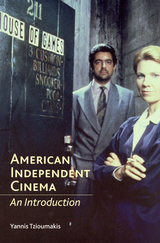
From the prestige films of Cagney Productions to recent, ultra-low budget cult hits, such as Clerks and The Blair Witch Project, American independent cinema has produced some of the most distinctive films ever made. This comprehensive introduction draws on key films, filmmakers, and film companies from the early twentieth century to the present to examine the factors that shaped this vital and evolving mode of filmmaking.
Specifically, it explores the complex and dynamic relations between independent and mainstream Hollywood cinema, showing how institutional, industrial, and economic changes in the latter have shaped and informed the former. Ordered chronologically, the book begins with Independent Filmmaking in the Studio Era (examining both top-rank and low-end film production), moves to the 1950s and 1960s (discussing both the adoption of independent filmmaking as the main method of production as well as exploitation filmmaking), and finishes with contemporary American independent cinema (exploring areas such as the New Hollywood, the rise of mini-major and major independent companies and the institutionalization of independent cinema in the 1990s). Each chapter includes case studies which focus on specific films, filmmakers, and production and distribution companies.
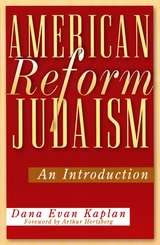
The only comprehensive and up-to-date look at Reform Judaism, this book analyzes the forces currently challenging the Reform movement, now the largest Jewish denomination in the United States.
To distinguish itself from Orthodox and Conservative Judaism, the Reform movement tries to be an egalitarian, open, and innovative version of the faith true to the spirit of the tradition but nonetheless fully compatible with modern secular life. Promoting itself in this way, Reform Judaism has been tremendously successful in recruiting a variety of people—intermarried families, feminists, gays and lesbians, and interracial families among others—who resist more traditional forms of worship.
As an unintended result of this success, the movement now struggles with an identity crisis brought on by its liberal theology, which teaches that each Jew is free to practice Judaism more or less as he or she pleases. In the absence of the authority that comes from a theology based on a commanding, all-powerful God, can Reform Judaism continue to thrive? Can it be broadly inclusive and still be uniquely and authentically Jewish?
Taking this question as his point of departure, Dana Evan Kaplan provides a broad overview of the American Reform movement and its history, theology, and politics. He then takes a hard look at the challenges the movement faces as it attempts to reinvent itself in the new millennium. In so doing, Kaplan gives the reader a sense of where Reform Judaism has come from, where it stands on the major issues, and where it may be going.
Addressing the issues that have confronted the movement—including the ordination of women, acceptance of homosexuality, the problem of assimilation, the question of rabbinic officiation at intermarriages, the struggle for acceptance in Israel, and Jewish education and others—Kaplan sheds light on the connection between Reform ideology and cultural realities. He unflinchingly, yet optimistically, assesses the movement’s future and cautions that stormy weather may be ahead.

Animal Cognition presents a clear, concise, and comprehensive overview of what we know about cognitive processes in animals. Focusing mainly on what has been learned from experimental research, Vauclair presents a wide-ranging review of studies of many kinds of animals--bees and wasps, cats and dogs, dolphins and sea otters, pigeons and titmice, baboons, chimpanzees, vervet monkeys, and Japanese macaques. He also offers a novel discussion of the ways Piaget's theory of cognitive development and Piagetian concepts may be used to develop models for the study of animal cognition.
Individual chapters review the current state of our knowledge about specific kinds of cognition in animals: tool use and spatial and temporal representations; social cognition--how animals manage their relational life and the cognitive organization that sustains social behaviors; representation, communication, and language; and imitation, self-recognition, and the theory of mind--what animals know about themselves. The book closes with Vauclair's "agenda for comparative cognition." Here he examines the relationship of the experimental approach to other fields and methods of inquiry, such as cognitive ethology and the ecological approach to species comparisons. It is here, too, that Vauclair addresses the key issue of continuity, or its absence, between animal and human cognition.
Given our still limited knowledge of cognitive systems in animals, Vauclair argues, researchers should be less concerned with the "why" question--the evolutionary or ecological explanations for differences in cognition between the species--and more concerned with the "what"--the careful work that is needed to increase our understanding of similarities and differences in cognitive processes. This thoughtful and lively book will be of great value to students of animal behavior and to anyone who desires a better understanding of humankind's relations to other living creatures.
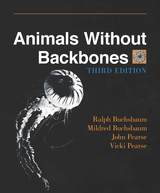
This new edition has been completely rewritten and redesigned, but it retains the same clarity and careful scholarship that have earned this book its continuing readership for half a century. It is even more lavishly illustrated than earlier editions, incorporating many new drawings and photographs. Informative, concise legends that form an integral part of the text accompany the illustrations. The text has been updated to include findings from recent research. Eschewing pure morphology, the authors use each group of animals to introduce one or more biological principles.
In recent decades, courses and texts on invertebrate zoology at many universities have been available only for advanced biology majors specializing in this area. The Third Edition of Animals Without Backbones remains an ideal introduction to invertebrates for lower-level biology majors, nonmajors, students in paleontology and other related fields, junior college and advanced high school students, and the general reader who pursues the rewarding study of the natural world.

eBook answer keys are now available on VitalSource.com! Please visit their website for more information on pricing and availability.
This answer key is to be used with Alif Baa: Introduction to Arabic Letters and Sounds, Third Edition. Please note that this answer key contains answers for exercises that are in the book. It does not contain answers for exercises formerly found on the Smart Sparrow Companion Website, which is no longer available after January 1, 2021.
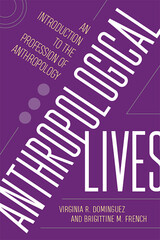
Anthropologists profiled: Leslie Aiello, Lee Baker, João Biehl, Tom Boellstorff, Jacqueline Comito, Shannon Dawdy, Virginia R. Dominguez, T.J. Ferguson, Brigittine French, Agustín Fuentes, Amy Goldenberg, Mary Gray, Sarah Green, Monica Heller, Douglas Hertzler, Ed Liebow, Mariano Perelman, Jeremy Sabloff, Carolyn Sargent, Marilyn Strathern, Nandini Sundar, Alaka Wali.
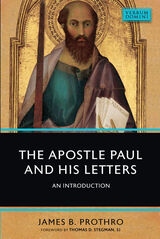

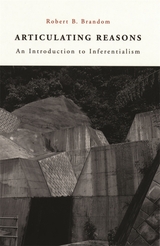
Robert B. Brandom is one of the most original philosophers of our day, whose book Making It Explicit covered and extended a vast range of topics in metaphysics, epistemology, and philosophy of language--the very core of analytic philosophy. This new work provides an approachable introduction to the complex system that Making It Explicit mapped out. A tour of the earlier book's large ideas and relevant details, Articulating Reasons offers an easy entry into two of the main themes of Brandom's work: the idea that the semantic content of a sentence is determined by the norms governing inferences to and from it, and the idea that the distinctive function of logical vocabulary is to let us make our tacit inferential commitments explicit.
Brandom's work, making the move from representationalism to inferentialism, constitutes a near-Copernican shift in the philosophy of language--and the most important single development in the field in recent decades. Articulating Reasons puts this accomplishment within reach of nonphilosophers who want to understand the state of the foundations of semantics.

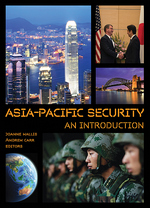
This new textbook gathers an international roster of top security studies scholars to provide an overview of Asia-Pacific’s international relations and pressing contemporary security issues. It is a suitable introduction for undergraduate and masters students' use in international relations and security studies courses. Merging a strong theoretical component with rich contemporary and historical empirical examples, Asia-Pacific Security examines the region's key players and challenges as well as a spectrum of proposed solutions for improving regional stability. Major topics include in-depth looks at the United States' relationship with China; Security concerns presented by small and microstates, the region's largest group of nations; threats posed by terrorism and insurgency; the region's accelerating arms race and the potential for an Asian war; the possible roles of multilateralism, security communities, and human security as part of solutions to regional problems.

Autism is a fascinating yet perplexing disorder that continues to intrigue researchers and clinicians studying brain and behavior. In this lucid and elegant book, Francesca Happé provides a concise overview of current psychological theory and research that synthesizes the established work on the biological foundations, cognitive characteristics, and behavioral manifestations of this disorder. She focuses her discussion on the cognitive approaches that deal with both thought and feeling--those hypotheses that link brain to action, deepen our understanding of the autistic person's view of the world, and offer better approaches to effectively managing the behavior of people with autism struggling to live in our world. The book reviews the latest research into the communication, socialization, and imagination impairments in autism, and further distinguishes the levels of severity in the spectrum of autistic disorders. Happé also includes a discussion of the talented few--high-functioning autistic individuals with Asperger's syndrome--and of the many childhood behavioral disorders, unrelated to autism, that manifest autistic-like symptoms.
Autism is an important and much-needed contribution to the literature. It will be valued by parents and teachers of autistic children as well as by students and researchers interested in disorders of language and communication.

Abū al-Walīd Muḥammad ibn Aḥmad ibn Rushd (d. 1198 AD), known as Averroes in the West, wrote one of the most significant medieval Arabic commentaries on Aristotle’s famous treatise, Rhetoric. Averroes worked within a tradition that included the Muslim philosophers Al-Farabi (d. 950) and Avicenna (d. 1037), who together built an early canon introducing Aristotle’s writings to the academies of medieval Europe. Here, for the first time, Lahcen El Yazghi Ezzaher translates Averroes’ Middle Commentary into English, with analysis highlighting its shaping of philosophical thought.
Ibn Rushd was born into a prominent family living in Córdoba and Seville during the reign of the Almoḥad dynasty in the Maghreb and al-Andalus. At court, he received support to write a body of rhetorical commentaries extending the work of his Arabic-Muslim predecessors, a critical step in fostering Aristotle’s influence on European scholasticism and Western education. Ezzaher’s meticulous translation of Averroes’ Middle Commentary reflects the depth and breadth of this engagement, incorporating a discussion of the Arabic-Muslim commentary tradition and Averroes’ contribution to it. His research illuminates the complexity of Averroes’ position, articulating the challenges Muslim scholars faced in making non-Muslim texts available to their community. Through his work, we see how people at different historical moments have adapted intellectual concepts to preserve rhetoric’s vitality and relevance in new contexts.
Averroes’ Middle Commentary exemplifies the close connections between ancient Greece and medieval Muslim scholarship and the ways Muslim scholars navigated an appreciation for Aristotelian philosophy alongside a commitment to their cultural and religious systems.
READERS
Browse our collection.
PUBLISHERS
See BiblioVault's publisher services.
STUDENT SERVICES
Files for college accessibility offices.
UChicago Accessibility Resources
home | accessibility | search | about | contact us
BiblioVault ® 2001 - 2024
The University of Chicago Press



